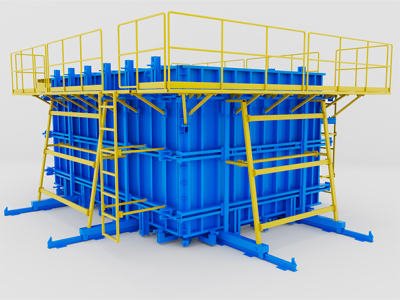Precast 3D House Mold
1.Flexible drawing-based customization: The 3D House Mold adapts to your drawings and site requirements, ensuring precast concrete modules meet precise project dimensions without modifying your original plan.
2.Integrated factory workflow with optional automation: Supports factory prefabrication and on-site quick assembly. Compatible with optional hydraulic opening, vibration, and heating functions to compact mixes and accelerate curing, keeping workshops cleaner and construction teams more efficient.
3.Durable, reusable design for green building: Withstands multiple casting cycles. Modular design reduces on-site waste and scrap, lowering life-cycle costs and aligning with sustainable factory-based construction.
The Precast 3D House Mold is designed to make prefabricated housing feel manageable and reassuring on the factory floor. It aims to be the kind of tool that production crews trust to behave predictably: the mold closes, the reinforcement is placed, concrete flows in, and the finished module emerges ready for stacking or shipment. That predictable behavior matters more than flashy specs, because steady repeatability reduces last minute hassles and helps projects meet their deadlines without last minute scrambling.This forming system was conceived with everyday realities in mind. It adapts to drawings and site specifics so producers do not have to contort project plans to fit the equipment. It accepts automation options that help crews control consolidation and curing in ways that suit local mixes and seasonal conditions. Build teams quickly notice the practical choices—accessible maintenance points, clearly arranged lifting interfaces, and contact faces that help concrete release cleanly—choices that add up to fewer interruptions and a calmer production rhythm. The same development approach that shaped the Precast 3D House Mold shows in attention to material selection and surface finishing, which together help the tool last through many cycles and protect product quality.For manufacturers looking to scale prefabricated housing, this mold offers a straightforward path: it keeps production predictable, reduces manual firefighting, and fits into a workshop’s existing workflow without demanding radical changes. It is meant to be a practical partner that helps teams deliver good modules day after day rather than a complex novelty that requires constant tinkering.
1. Structural flexibility that follows the plan
The mold’s structural layout is intentionally forgiving so it can follow project drawings rather than force them to change. Panels and inserts are arranged to allow quick reconfiguration for varying layouts while maintaining alignment integrity during casting. Operators find the opening and closing movement to be intuitive and steady, which lowers the physical strain of repeated cycles and reduces the chance of misalignment. The frame is fabricated to focus strength where it matters, while service access is kept unobstructed so routine inspections feel straightforward. Overall, the design helps teams treat the mold as a reliable workmate, not a temperamental machine.
2.Workflow integration that eases day to day production
This forming system fits into a factory flow with minimal fuss. Infeed and outfeed paths are considered so handling stays sensible and cranes are used for moving finished modules rather than correcting positioning errors. The mold accepts optional aids that help consolidate fresh concrete and manage curing based on weather and mix properties, allowing crews to tune the process rather than guess at it. The connection points for lifting and transport match common handling fixtures so finished pieces move smoothly to curing areas or trucks. That integration reduces on-site scrambling and lets supervisors plan with greater confidence.
3.Material choices and finishes that protect outcomes
Durability is treated as a practical safeguard so production does not stumble over wear issues. Structural sections are made from steels chosen for fatigue resistance and toughness, and welding practices are applied to avoid stress concentrations that cause distortion. Contact surfaces receive finishing that encourages clean release and reduces the need for hands-on remedial work. Protective coatings help the tool withstand regular washdowns and outdoor storage without losing form. These material choices are not showy; they quietly preserve the geometry and surface quality that customers expect from precast housing modules.
4.Production quality that reduces touch up
The mold supports a casting sequence that favors consistency. Internal geometry and sealing details work together to limit slurry loss and avoid irregular set lines, and the tool readily accepts vibration and sealing options that improve consolidation without introducing new problems. Demolding unfolds in a controlled way so finished modules can be handled safely and progress to curing or stacking with less fuss. The payoff is more parts that pass inspection the first time and less time spent on patching and cosmetic repair.
5.Practical customization and long term support
Customization is offered as a pragmatic service: the mold can be adapted to match cavity shape, embed placements, and lifting arrangements so it fits project drawings rather than forcing writeovers. The supplier’s support focuses on helping operators reach steady production quickly through setup assistance and targeted training. Spare parts follow familiar specifications so maintenance logistics are easier to manage. In this sense the tool is not just metal and machining; it becomes part of an operator’s daily toolkit that helps the shop meet delivery commitments with less friction.
6.Closing thought
The Precast 3D House Mold is aimed at teams who value steady progress and predictable outcomes. It was built to be understood by the people who use it, to slot into existing practices, and to protect product quality across many cycles. Where projects require dependable prefabricated housing modules and crews prefer practical, low-fuss tooling, this mold brings a welcome steadiness to the production line and helps make good construction feel routine.







